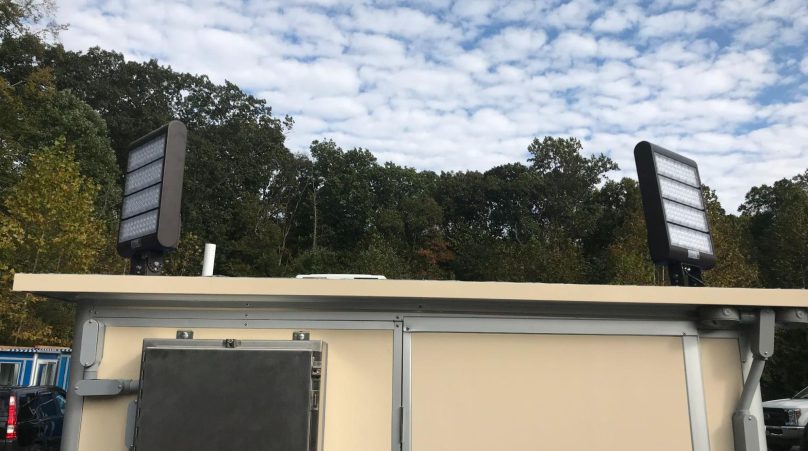In troubling modern times, it makes sense that you would consider bullet resistant glass as a way to enhance security in your home, school, house of worship, security shack, or workplace. An armored guard house paired with a trained security guard sounds just like the thing you need to keep everyone under your jurisdiction safe. But before you spend the money on an upgrade to bullet proof ticket booth windows or a bullet proof guard house, be sure that you truly understand what bullet resistant glass is and how it fits your needs, as well as the cost of bullet proof glass.
The Myth of Bullet Proof Glass Windows
Let’s start by making one thing clear: There is no bullet proof glass and there is no such thing as a bulletproof security booth.
You’re shocked, right? We know. But it’s the word “proof” that is the problem.
There is bullet resistant glass, which is highly rated to stop most projectiles, but with the
amazing and ever changing weapons that humans can create, anyone who tells you they have
bulletproof glass for sale is not telling the entire truth. There is no such thing as bullet proof glass.
But there are glasses that are made to withstand incredibly hard impacts, and can most
likely protect your building from whatever comes at it, including most bullets.
Now that you know the truth, let’s get deeper into some facts. This article will help you:
● Understand Armored Glass – What it is and What it is not
● Learn the History of Bullet Resistant Glass Used to Bulletproof Things
● Understand Bullet Resistant Glass Ratings and Applications
● Know how to use Bullet Resistant Glass to Protect Your Property
● Decide if Bullet-Resistant Booths Are Right for You
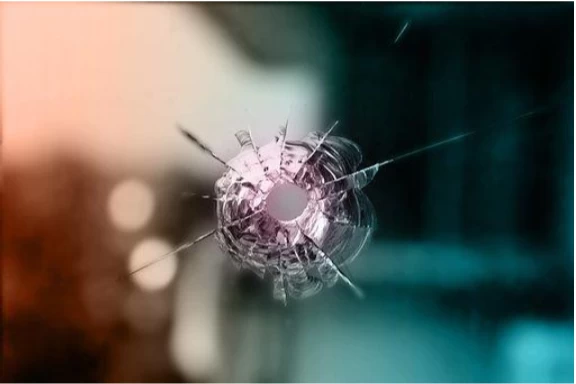
Understanding Armored Glass
Glass itself has been around since the dawn of time, as nature can make it on its own when lightning strikes certain types of sand or substrate. Humans have been using and making glass for over 5,000 years. By the 17th Century, glass was starting to be commonly used in building windows. Glass has always been revered for a variety of qualities, from keeping out air, sand, and other elements, to being translucent, waterproof, and relatively sturdy.
As time – and human history – marched on, people began to look to glass, and other materials, to become stronger in an attempt to better protect people from the elements and each other. Thus, weather-resistant and bullet resistant glass were invented.
The history of bullet resistant glass (of course we can’t tell you the history of bullet proof glass, as we said earlier there’s on such thing!) is relatively simple but interesting. It originates with the idea that glass breaks because it is not yielding in any way – when it gets hit with some percussive force, it must break immediately. So who invented “bullet proof glass” ie bullet resistant glass? In 1909, a French chemist named Edouard Benedictus patented a laminated glass, that is glass that had a celluloid layer on top of it that allowed the glass to absorb some level of shock and thus not break so easily.
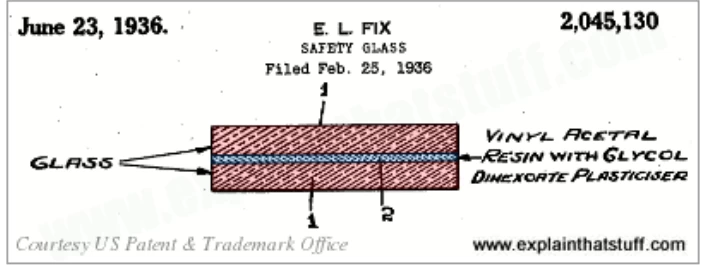
Within 30 years, the technology was improving, and companies such as the Pittsburgh Plate Glass Company were manufacturing lamented safety glass. Over the years, technology has improved, more layers have been added, and impact-resistant, hurricane resistant, and ballistic “bullet-resistant” glass was born.
Today, most bullet-resistant glass is actually not glass at all. Rather, it is a thick, see-through panel comprised, “of a base layer of polycarbonate, acrylic, or glass-clad polycarbonate glazed with bullet-resistant material. This is why some companies refer to them as “glazing material” instead of bullet proof glass”. This “glass” is used to make bullet proof glass doors and windows for buildings and vehicles. One commonly used material is polymethyl (or polymethacrylate), which is also called acrylic, acrylic glass, or plexiglass. This type of glass can go by the brand names of Crylux Plexiglass, Acrylite, Astariglas, Lucite, Perclax, and Perspex, among others.
Manufacturers strive to make their materials as light as possible while maintaining its impact ability. The National Institute of Justice publishes Ballistic Resistant Protective Materials which overviews the specifications and details of making glass that can claim bullet resistance.
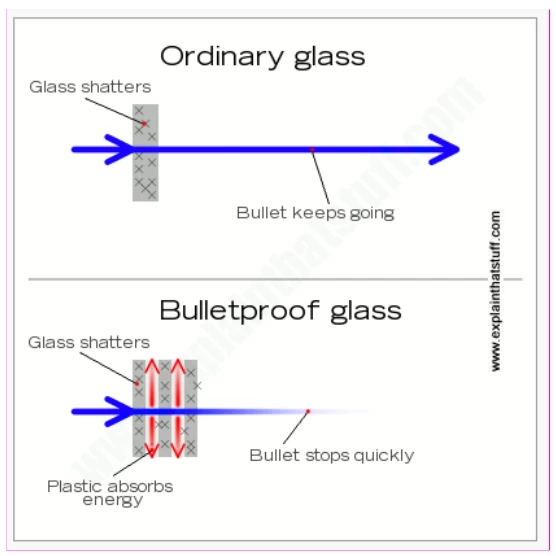
Details About Bullet Resistant Glass Strength
The most important thing for you to know when buying ballistic glass is whether it is UL approved. UL is a national safety organization that certifies many products for safety and energy use. Their standard 752 certifies bullet resistant glass. There are 8 levels of bullet resistant glass. Though they are not entirely linear, the higher numbers do seem to be stronger, on average. But it is important that you know the specs, not just the level. Whatever company you choose, ensure that they can provide you with test specs for the glass you are paying for.
Many people wonder if bullet-resistant glass can stop a 50-caliber bullet. While UL does not specifically rate any glass in this manner, one website did a test and found that it is highly likely that the best glass will, indeed, stop at least one bullet.
Bullet resistant glass for a bulletproof shelter is manufactured in a variety of ways by many different companies, using multiple types of material. Lexan is one type of polycarbonate that is often used to make bullet-resistant glass. The cost of ballistic glass for a ballistic guard booth will vary from company to company, and based on what size, shape, and strength that you need, but you can expect to pay anywhere from $25 to $100 a square foot – maybe more. It is not an inexpensive option, especially when it comes to creating a bulletproof house or other large bullet safety guard enclosure.
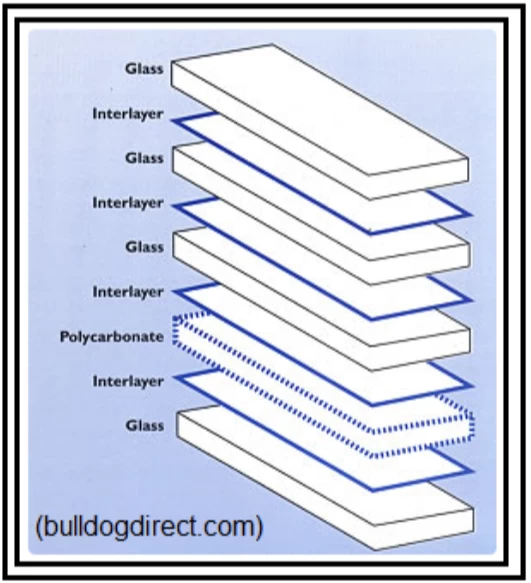
There are many bullet stop materials used in construction, some more effective than others. Dirt, for example, is a fantastic bullet stop, but so is a concrete block. While a bullet can fly relatively easily through a house built with wood studs, siding, and drywall, a bullet will be stopped or at least slowed significantly if shot at a wall made of brick or concrete, or ballistic glass. Fiberglass can also be made bullet resistant. This means that a building can be created to use fiberglass or other materials, coupled with ballistic glass windows, to be incredibly protective against any attack.
Types of Safety Glass
When talking about applications for bullet-resistant glass, it is important to also mention another type of material that is commonly installed as a safety precaution: tempered glass.
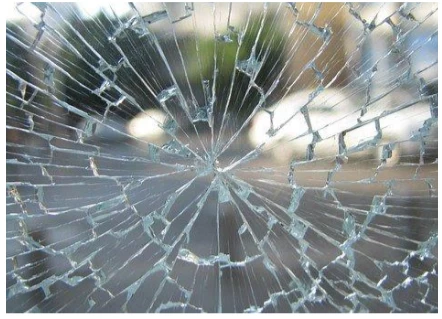
Tempered glass is a type of safety glass with increased strength, in comparison to regular glass. With tempered glass, you have actual sheets of glass, sandwiched between various plastic layers. The idea with tempered glass is not to stop bullets, but rather that if a strong impact does break the somewhat flexible glass, the glass will not shatter into dangerous, skin tearing shards, but rather will break into smaller, more innocent chunks that are held in place with the plastic coating or fall harmlessly to the ground in not-so-sharp chunks.
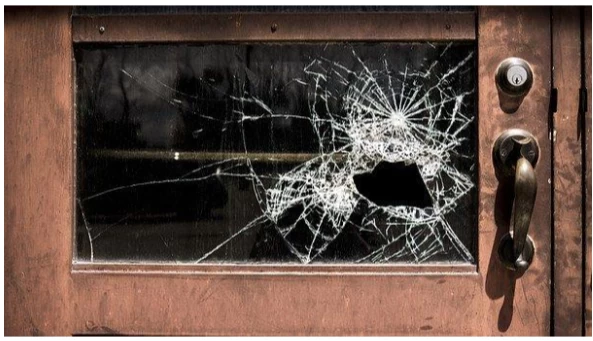
Tempered glass is commonly used in homes, schools, houses of worship, businesses, and public buildings today – much more common than the stronger – and more expensive – ballistic glass.
Due to safety reasons, often there are bullet proof windows and doors for schools. Most school windows – at least those in new schools where the windows are low in the wall – are tempered, as are most glass doors, sliding doors, picture windows, and other large glass that is installed low enough for there to be a danger that a human will bump into it and break it, in any modern building. Some schools may also use laminated glass. This is a type of safety glass that is made of two or more panes of annealed glass, joined together by a layer of plastic, or polyvinyl butyral (PVB). You can think of this joining as creating a glass sandwich (glass, plastic, glass). Some types of laminated glass are made with multiple layers (think of these as a laminated glass layer cake).
Another interesting feature that some people wonder about is, how does one-way bulletproof glass work? One-way glass is simply glass that is coated in a specific way to allow people on one side of the glass to see through the glass, but people on the other side of the glass not to see through, but usually to see a mirror instead.
If you have ever seen a television show or movie with the police interrogating a suspect in a holding room that has a large mirror on a wall, you probably know what this is. The suspect sees just a mirror, but on the other side of the mirror is a group of police officers or lawyers who can watch the proceeding without being seen. This type of one-way glass can be made to be bullet resistant through the layering process. And the applications are not limited to police stations. Any time you want privacy, one-way glass can be a potential solution.
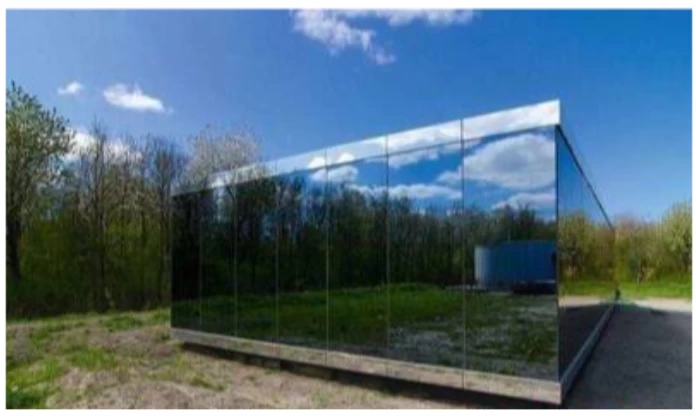
If you are wondering where to buy bullet-resistant glass for bullet resistant enclosures, know that there are many suppliers out there. What matters most is that you get honesty from your supplier; that they tell you what their glass can and cannot stop. Remember, when shopping, that it might be called “ballistic glass”, or “bullet resistant glass”. But beware of companies who market their glass as “bullet proof” without telling you the real truth. If you are looking to build what’s considered a bulletproof house or to go about bulletproofing corporate offices, make sure you do extensive research so that you know what you’ll be getting.
Guarding Your Property with Bullet Resistant Glass
When it comes to protecting your property, nothing beats the right mix of physical security, security guards, security shacks, and technology.
For many, this means having armored guard houses with trained security guard to monitor a site, during open and closed hours. It also means ensuring the guard has access to a secure communications and storage facility in the form of a guard shack or security shack, as well as communications equipment, effective lighting, and surveillance technology. But is bullet-resistant glass necessary on your guardhouse?
The answer is a resounding – maybe.
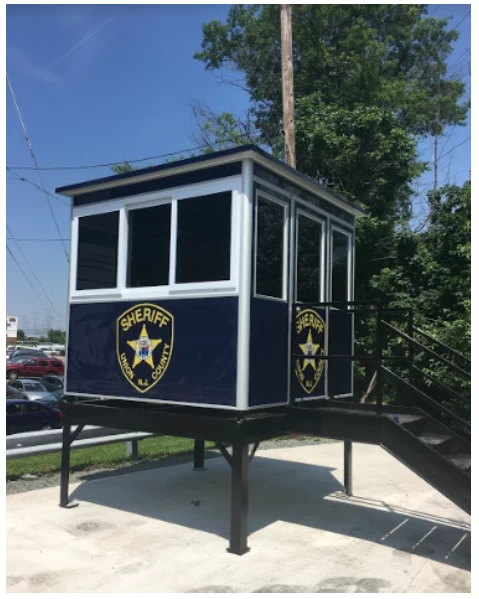
When asking, which is right for you? Bullet-proof vs. non bullet-proof guard booths, consider some facts. At Guardian Booth we have multiple levels of bullet-resistant glass and walls, to suit your needs and your budget. Most commonly, we offer UL 752 levels 1 and 3, enough to protect from three shots from a .44 caliber magnum, according to the UL rating.
Bullet resistant guard booths can be built to your specifications, including bullet-resistant glass and bullet resistant fiberglass walls. While they typically have fixed windows, operational windows, such as sliding transaction windows, and even windows with a speak through hole or microphone can be installed. Guardian Booth also offers bullet-resistant swing doors and sliding doors, with or without windows.
Making Your Decision
Bullet proof glass is a good solution – if you have an actual problem. The cost of bullet proof glass will significantly increase the cost of any building project, from a guard shack to a house, school, and beyond. So, it is up to you to weigh the cost to bulletproof versus the benefits.
When it comes to a home, school, or office, for example, ask yourself where the building is located, and what real threats exist. If the building is in a high crime or gang area, the peace of mind that bullet proof glass can offer might be worth the investment. In applications such as police stations, guard shacks, security shacks, and security buildings, it might be an even better idea. It all comes down to your need, application, perceived threat level, and budget. But now, armed with the real information on bullet-resistant glass, you are ready to make the best decision for your building.



